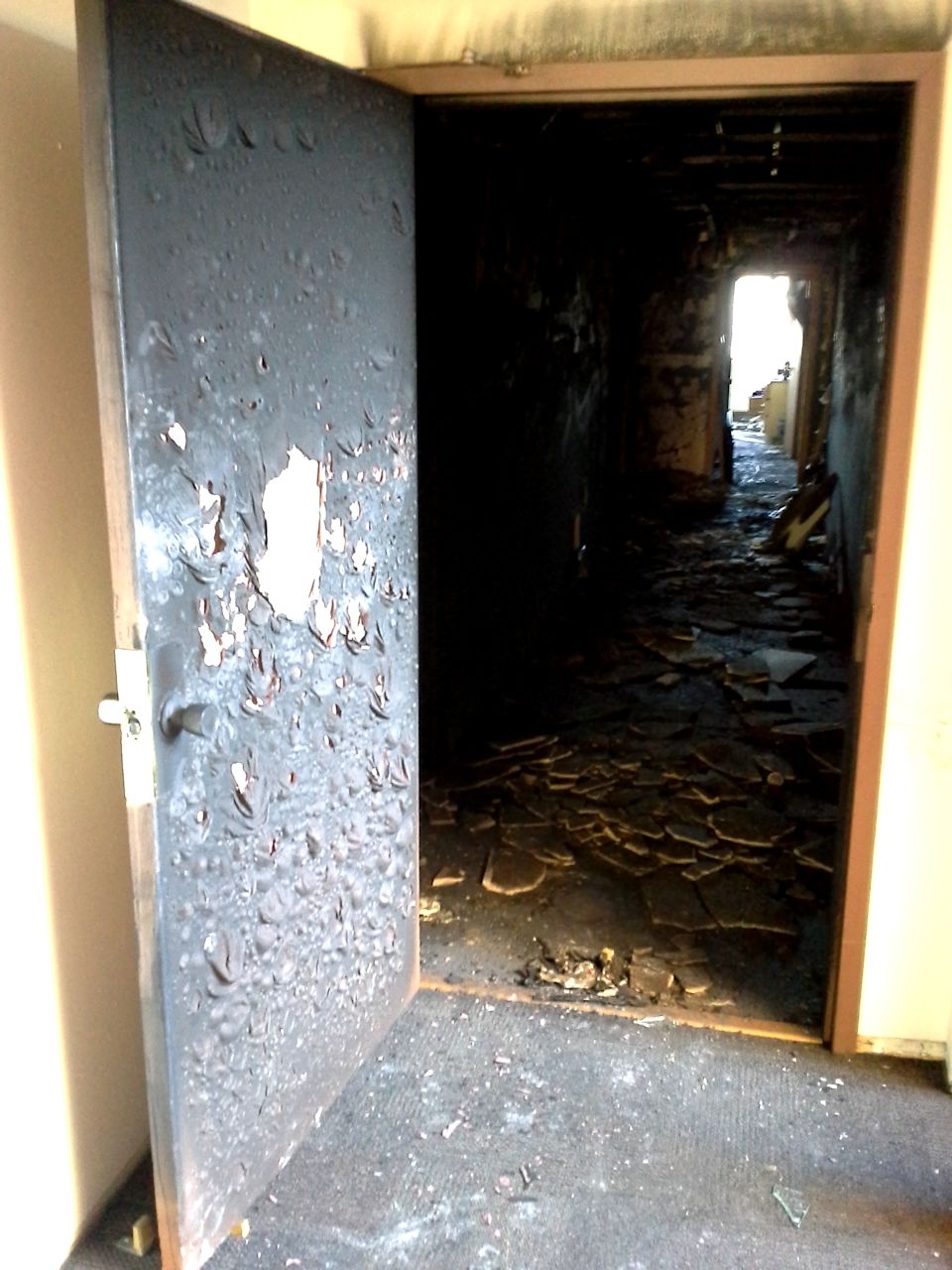
Photo: Scott Strassburg
Over the years and again this week, I’ve received emails related to the topic I wrote about in Tuesday’s post – fire door assemblies on assisted living unit entry doors. Although I will ALWAYS stand solidly on the side of life safety, I do understand the challenges.
My post on Tuesday was about an upcoming code change that will allow fire doors on assisted living units (and some other types of facilities) to NOT be self-closing or automatic-closing, as long as the unit does not have a cooktop or range. WHAT? A fire door that is not self-closing or automatic-closing? I can already see the 3-foot x 7-foot holes in the fire protection.
Historically, there have been very limited locations where a fire door was permitted by code without the assurance that it would be closed if/when a fire occurred. For example, a communicating door between two hotel rooms is required to be fire rated for when the rooms are used by two different guests, but is not required to be self-closing or automatic-closing for when both rooms are used together as a suite. I understand and support this exception.
But I can’t get behind the 2027 change to the IBC, considering how frequently apartment fires occur and how important the protection of the closed fire door can be. We’ve seen several recent examples of how open unit entry doors have impacted the outcome of apartment fires – similar risks exist in these other types of residential occupancies. You can read more about this in the articles linked below, but just for consideration, NFPA reports that in 2023 there were 76,500 apartment fires in the US, with 400 civilian casualties, 2,740 civilian injuries, and 2.3 billion dollars in property damage.
Several people have asked me about options to make these unit entry doors easier to open – particularly on assisted living facilities where residents may have difficulties or may even be injured by the door. The important thing to remember is that there ARE options. They may not all be easy/inexpensive, but what is the value of a life?
Door Closers – If the door has an existing door closer, it can be adjusted to close (and open) with less force, while still reliably latching the door. The closer can also be adjusted to close more slowly. I have even seen delayed action door closers installed on unit entries. These closers hold the door open for a minute or two to allow the person to walk through, but the downside is that the door must be pushed fully open to engage the delay feature. This may not be feasible for all residents.
Automatic Operators – Although these are the most expensive option, having an automatic operator on the unit entry allows an assisted living resident to push a button or activate a sensor and open their door automatically. Considering the number of people who will experience a disability – whether temporary or permanent – during their lifetime, an automatic operator may be a good investment.
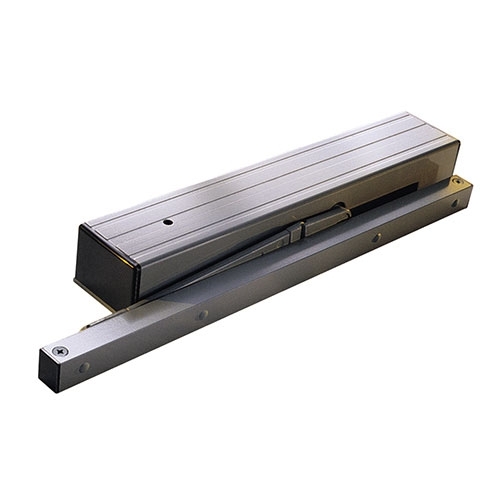 Automatic-Closing Doors – This is my favorite solution for these doors, and it is what was used on many hospital and nursing home patient rooms back when those doors were required to be fire door assemblies. The door is held open until the fire alarm is activated, and then is automatically released to close and latch.
Automatic-Closing Doors – This is my favorite solution for these doors, and it is what was used on many hospital and nursing home patient rooms back when those doors were required to be fire door assemblies. The door is held open until the fire alarm is activated, and then is automatically released to close and latch.
The product I prefer for this application is the LCN 4310MESF, which is an automatic closer/holder unit with a swing free arm. The swing free (SF) arm is the key. The first time the door is opened after a fire alarm or test, the door is pushed to 90 degrees and feels similar to a door with a regular closer. That initial opening cycle sets the hold-open portion of the closer arm in the fully-open position, and after that the door can be opened and closed without the resistance of a door closer. The door can be left open in any position, and it is extremely easy to open and close, very similar to a door without a closer. BUT – when the fire alarm is activated, the hold open portion of the arm pivots around and closes the door, providing the needed fire protection.
So here’s where I need help, and you could win a prize from the iDigHardware prize vault. The 4310MESF application is very difficult for people to imagine – especially people who don’t work in the world of door hardware. I need a video of a door with this unit that really illustrates how it functions. I have a couple of videos from a sample but I’d really like a full door so it’s easy to visualize how it works. The video doesn’t have to be anything fancy. And if you have other ideas about how to accommodate assisted living residents without compromising on their fire protection, leave a comment!
If I use your video on iDigHardware, I’ll send you a prize from the iDigHardware prize vault!
Here are the additional links to check out:
- Decoded: The importance of fire doors in residential occupancies
- Another Fire Door Win!
- FS65-24: Fire Doors Without Closers
- Do assisted living units need fire protection?
- Plan Your Ecape: High Rise Apartment Fire (video)
You need to login or register to bookmark/favorite this content.

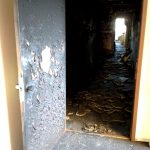



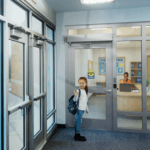
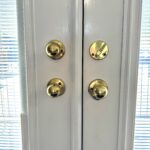
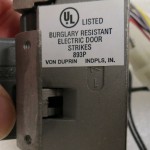

So if this passes, if a closer is added,,, does it have to be listed/ tested??
Such as :
https://techcrunch.com/2018/01/09/lifedoor-closes-your-homes-doors-automatically-to-protect-against-fires/
Hi Charles –
Any component that is part of a fire door assembly has to be listed to UL 10C or NFPA 252-positive pressure (per the IBC), so even though a closer is not required, any product that gets installed would have to be listed.
– Lori
The closure you recommend solves a problem I am currently working on, or it might.
This would solve the problem of where to install a magnetic hold open device. This for a commercial kitchen where a floor hold open would be damaged during cleaning and the door in its held open position (90 degrees is not close to a wall for a wall mounted hold open. Can the closure be set for a 90 degree hold open position? Will it be rigid in this position so minor bumping the door will not set it in motion?
Hi Charles –
The 4310MESF is a multi-point hold open…imagine that under normal operation it acts basically like a door without a closer. It just sits wherever you leave it. It might not be the best for your application for the door to be sitting open at 30 degrees, for example, and the minor bumping you mentioned would move the door because the door is just hanging around like it doesn’t have a closer. There are optional closer cylinders to keep the door from going into hold open until it gets beyond 80/140 degrees, but I still don’t think it’s the best application for your situation (read on!).
I like to use magnetic holders where possible because they’re basically problem-free, but I understand that sometimes they aren’t the perfect solution. When I can’t use a magnetic holder and the door needs to be held open at a specific degree of opening, I would use the 4040SE instead of the multipoint (ME) unit. You can set this unit for a 90-degree hold open point, but the door really also needs a stop, which brings us back to the problem of where to put that since the floor and wall won’t work well.
So here’s what I would recommend. If the closer can be mounted on the push side of the door, I would use a closer with a built-in stop (non-spring-loaded), like an LCN 4111-CUSH. To provide the hold-open feature, I would use the LCN 4040-SEH, which is just the track and arm for the 4040SE unit. Using the combination of the 4111-CUSH and the 4040-SEH, you have an automatic-closing unit that also includes the stop. It can hold the door at 90 degrees and it should be pretty stable in case it gets bumped slightly. I actually saw this set-up on a field trip last year…you can see it here: https://idighardware.com/2024/07/hold-open-application/.
If you decide to go with this application, I’d love some photos for iDigHardware!
– Lori